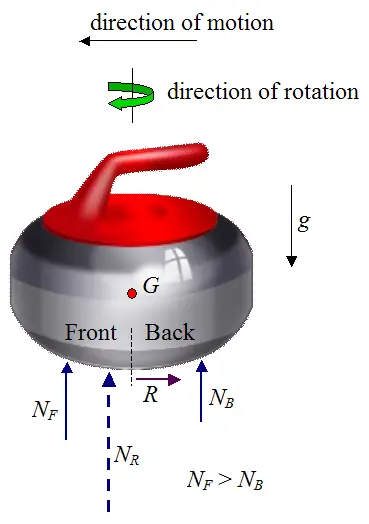Curling is hugely popular in Canada, and it's only been an Olympic sport since 1998, but its roots lie in medieval Scotland, where it once was known as "the roaring game" because that's the sound you hear as a curling stone rolls down the ice. The earliest known written reference, according to Wikipedia, dates back to 1541, but there is an inscribed curling stone with the date 1511. Those early stones looked nothing like the "rocks' used in curling today, and because they were so irregular in size, shape and texture, players had far less control over the stones' trajectories along the ice.
Today's curling stones are made of a special kind of granite from Scotland, with a handle attached to the top, the better to grip and rotate (ever so slightly) as a player releases the stone. That's how you get the slow gentle curl of the stone's trajectory, hence the name.
Sweeping!!
When sweeping, pressure and speed of the brush head are key in slightly increasing the layer of moisture that builds up under the stone. One of the basic technical aspects of curling is knowing when to sweep. When the ice in front of the stone is swept, a stone will usually travel both farther and straighter.
Friction behind Curling

Today's curling stones are made of a special kind of granite from Scotland, with a handle attached to the top, the better to grip and rotate (ever so slightly) as a player releases the stone. That's how you get the slow gentle curl of the stone's trajectory, hence the name.
Sweeping!!
When sweeping, pressure and speed of the brush head are key in slightly increasing the layer of moisture that builds up under the stone. One of the basic technical aspects of curling is knowing when to sweep. When the ice in front of the stone is swept, a stone will usually travel both farther and straighter.
Friction behind Curling

It is a known fact that contact pressure with ice melts a very thin layer of water on the surface of the ice. This in turn decreases friction. Thus, the friction is inversely proportional to the amount of contact pressure with the ice.
Comments
Post a Comment